Remember those fun times with disposable underwater cameras at summer camp and family trips? **Smartphones have tested their water-resistance** limits too. **Why not dive into** underwater photography?
Of course, if you’ve experimented with underwater photography before, you know there’s a real skill involved. Venturing into underwater photography requires practice, patience, and perseverance. Here, taking a great photo isn’t your only focus. Careful attention must be paid to every aspect of this new environment. There’s no gravity. No tripod to keep the camera straight. If it’s sunny — how will the lighting look streaming through the water? And of course, breathing. Will you be freediving, holding your breath for several minutes at a time, or wearing a scuba tank?
Underwater photographer John Starrett chooses to freedive, enjoying the freedom and mobility it provides. A Florida native who spends all his free time surfing and freediving, his journey into underwater photography happened completely by chance.
When he started taking his GoPro out on the water, he found that it all seemed to come pretty naturally. Over time, and with more practice, the popularity of his photography started to take off. Some of his shots were being featured in magazines. Others were being displayed in hospitals and offices.
By then, it was clear to Starrett that he could turn this into a viable career. He upgraded to a DSLR with housing — specifically, a Canon 5D Mark IV with a variety of lenses encased in AquaTech Elite Housing — and started shooting.
A Breathtaking Underwater Wedding Photoshoot
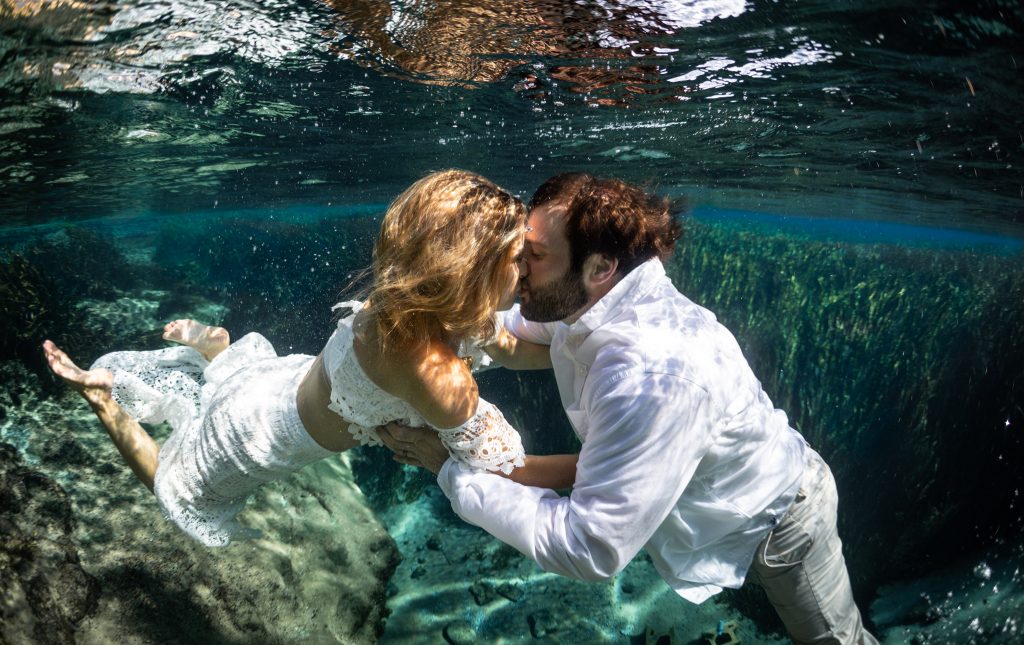
While Starrett is passionate about underwater photography, he is also well-versed in a variety of photography, and considers himself a commercial lifestyle photographer. He does commercial work for Visit Florida and the Springs Institute, as well as engagements, weddings, and events.
Starrett met Kelsey Swails a few years ago when they worked on a photography project for the Jackson County Tourist Development Council. When her boyfriend Brian Lovering proposed last year, she knew immediately that Starrett would be the perfect photographer to capture their big day.
Due to social distancing and quarantine restrictions, they had to replan their wedding this past April, turning their original church wedding into a more intimate affair of just family and close friends. One small ray of light: now, their wedding would be on the water, with guests on boats, kayaks, and paddleboards surrounding them.
As Kelsey and Brian spend all their free time together in and on the water, this new location was a perfect fit. They also decided to have an underwater wedding photoshoot at Jackson Blue Springs, a few miles north of their millpond wedding. There aren’t many photographers who can take gorgeous photos of your big day and then immediately jump in the water for a one-of-a-kind photo shoot. Starrett is one of them.
Read more about Kelsey and Brian’s unforgettable wedding here.
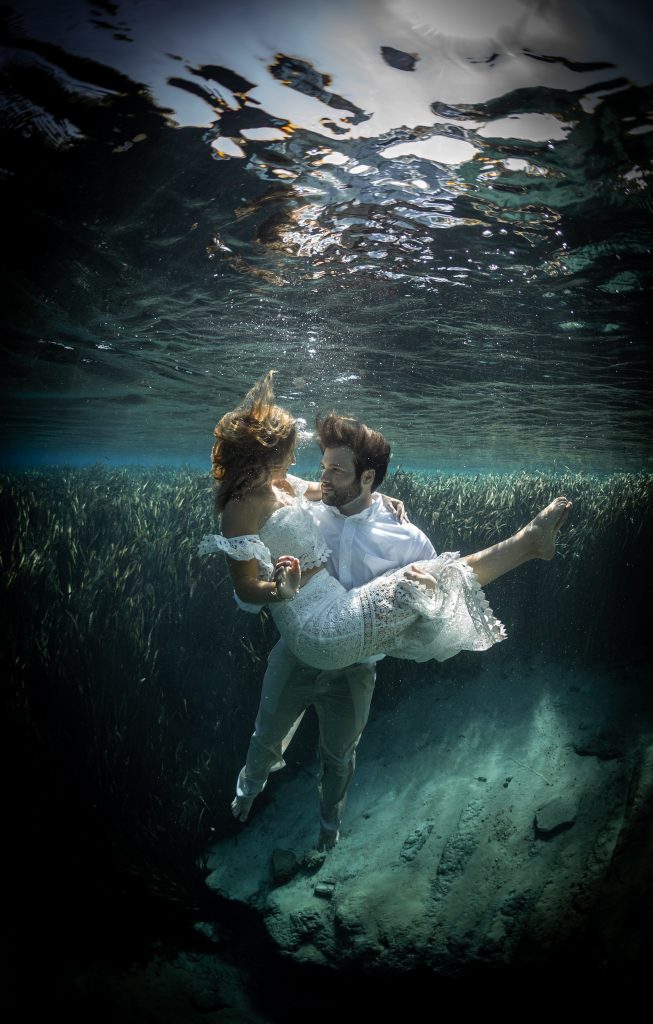
The Florida Springs
In addition to doing photography for nonprofits and local companies whose aim is protecting our marine waterways and marine life, Starrett also works to enact change and inspire future generations. One of his passion projects is helping bring awareness to the Florida springs — his favorite places to take underwater photos. There are hundreds of springs across the entire Sunshine State, and every single one is unique and different from the next.
“The one spring that I just can’t get enough of is probably Devil’s Ear, part of Ginnie Springs in the middle of the Santa Fe River.
So you have this Aqua gin clear water mixing with the Tannin brown water of the Santa Fe. It looks like… a big brush fire or a bonfire, the way it discolors the sky and it makes it all fiery. It’s a surreal spring to dive into. And when you look up, you’re looking through the crystal clear water as it mixes in confluence with the tannin water. It’s just an incredible place.
It’s eerie, because it’s the Santa Fe, and there are a lot of “murder logs” around. I’ve never seen alligators and things like that, but once you get out of the gin clear water, you can only see about a foot in front of you. So it’s just, it’s a real eerie, but at the same time, it’s just amazingly beautiful too.”
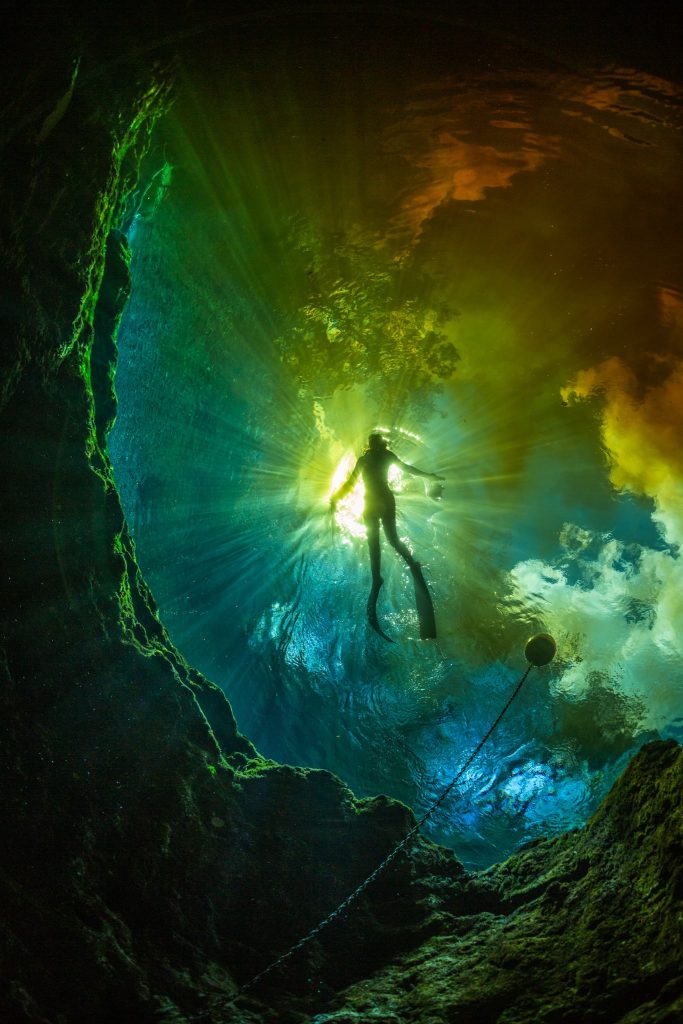
His Favorite Underwater Photo
Ever since he started doing underwater photography with his GoPro, he has been taking his gear along on his underwater ventures. Over time he’s taken countless photos in a wide variety of springs, lakes, and oceans. It feels impossible to choose just one photo that he considers his favorite. “I’ll take one and that’ll be my new favorite and then I’ll take another one a month later and that’ll be my new favorite.” But one of his current favorites? It’s a shot that helped solidify his decision to pursue photography full-time.
“I was diving off Navarre Reef — they have an artificial reef system out there. A massive school of tarpon were feeding on menhaden. It was just this giant wall of bait fish, you couldn’t even see through it, just thousands of bait fish in front of me. All of a sudden, an eight foot tarpon broke through that wall of bait fish. I just happened to be right there at the right time, the right place, with the GoPro. So I put the GoPro right in the tarpon’s face and snapped, just a couple of shots — and I couldn’t believe it. More than 30 tarpon were hanging on the reef for about two days, and it was pretty incredible. But that particular shot was such an amazing experience, and I feel that it captured the moment exactly how I felt it. That was pretty incredible.”
Usually for a shot like that, you have to do a significant amount of traveling and planning. But for Starrett — who lives in Navarre, Florida — this was just another day out exploring his regular diving spot.
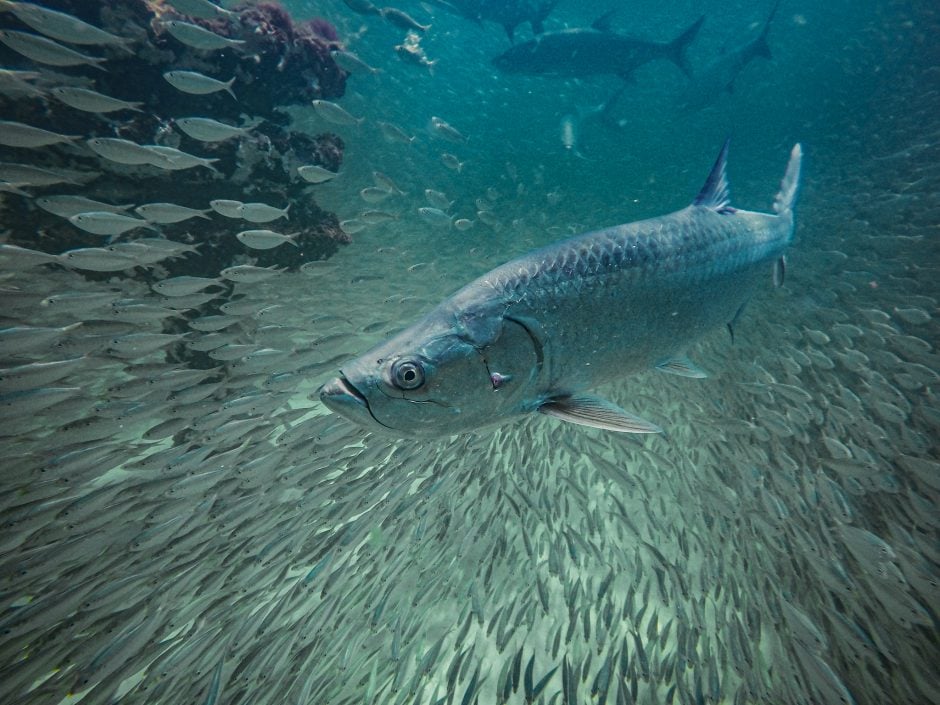
Getting Started in Underwater Photography
All you need to get started is underwater housing for your camera. Proper underwater housing provides full control of your camera’s functions underwater, allowing you to set and adjust your camera as needed. Once you’ve got your gear, it’s time to get practicing. Here are Starrett’s top three tips:
1. Make sure you’re comfortable in the water. That ease will translate on camera and make it a more enjoyable experience.
2. Be open to constructive criticism. Find other creators you respect and get their opinion. Over time, you’ll start to develop your own style and get what you want out of it. But when you start out, be open to anything and keep trying things.
3. Most importantly: “Shoot, shoot, shoot, and practice, practice, practice. Never give up, just keep going, trying and experimenting.”
Before you bring any camera equipment into the water, make sure you’re comfortable moving and being underwater. This familiarity will allow you to relax and pay attention to other important factors, like mobility, breathing, and lighting.

On mobility and breathing:
Starrett is a FII certified level two freediver. The only gear he takes when he freedives is his photography gear and his three-foot-long carbon fiber fins. It’s clear that Starrett feels extremely comfortable underwater. “Freediving is extremely simple,” he says.
When you’re doing underwater photography, there’s a lot to consider before taking scuba gear into account. Keep in mind that you have to be a good swimmer — agile enough to move into position and find the composition you’re looking for, all in one breath. There’s already a lot going on just being under water. Then throw in using a technical camera into the mix. Scuba gear would take an hour or longer to set up. It slows you down under the water, and the bubbles might scare your subject.
“I’ve used extremely long oceans to move and pace with my subject. And that helps especially with Marine life such as under waters like sea turtles. The scuba tank bubbles can scare them. It’s also extremely hard to move fast with a giant scuba tank on your back. With freediving, you streamline your suit and your fans. You can really pace with different Marine lives. So yeah, being comfortable in the water is precedent.”
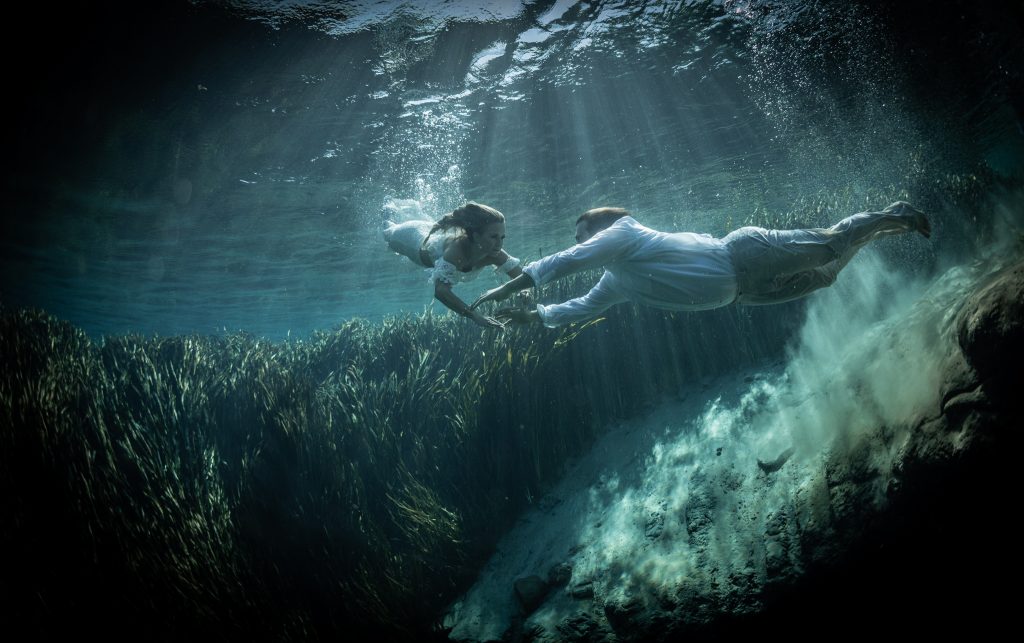
On lighting, setup, and subjects:
Starrett prefers to use ambient light when doing underwater photography. He doesn’t use artificial light sources. Most of the time, he’s using a fisheye lens, which lets him take wide angle shots. He also includes people in his shots, which helps add perspective and show the scale of his shots.
When working with subjects, Starrett recommends having them hold their breath rather than use any scuba gear, so it’s best to work with people who are extremely comfortable underwater. This won’t be a typical photo shoot — and these pictures will be anything but typical.
If they’re wearing regular clothes, looking like you’re effortlessly floating in the water will take some practice, especially since the clothes will actually be weighing you down. And it will take some practice, but have them release all the air from their lungs immediately. You don’t want it to look like you’re holding in the air — puffed up cheeks — and ideally, the shot wouldn’t have bubbles coming out of your nose or mouth. Releasing all the air means your subject will look as natural as possible.

Whether you’re interested in taking underwater photography when you’re freediving, curious to expand your photography skills in a new environment, looking to take better pictures of your loved ones diving for toys at the pool — or perhaps a mix of the three — we hope Starrett’s tips on getting started has ignited an interest in getting started with underwater photography.
A big thanks to John Starrett for sharing these incredible photos and fascinating insight on what it takes to take underwater photos. Check out more of his photography on his Instagram, @johnstarrettphoto, and his website.

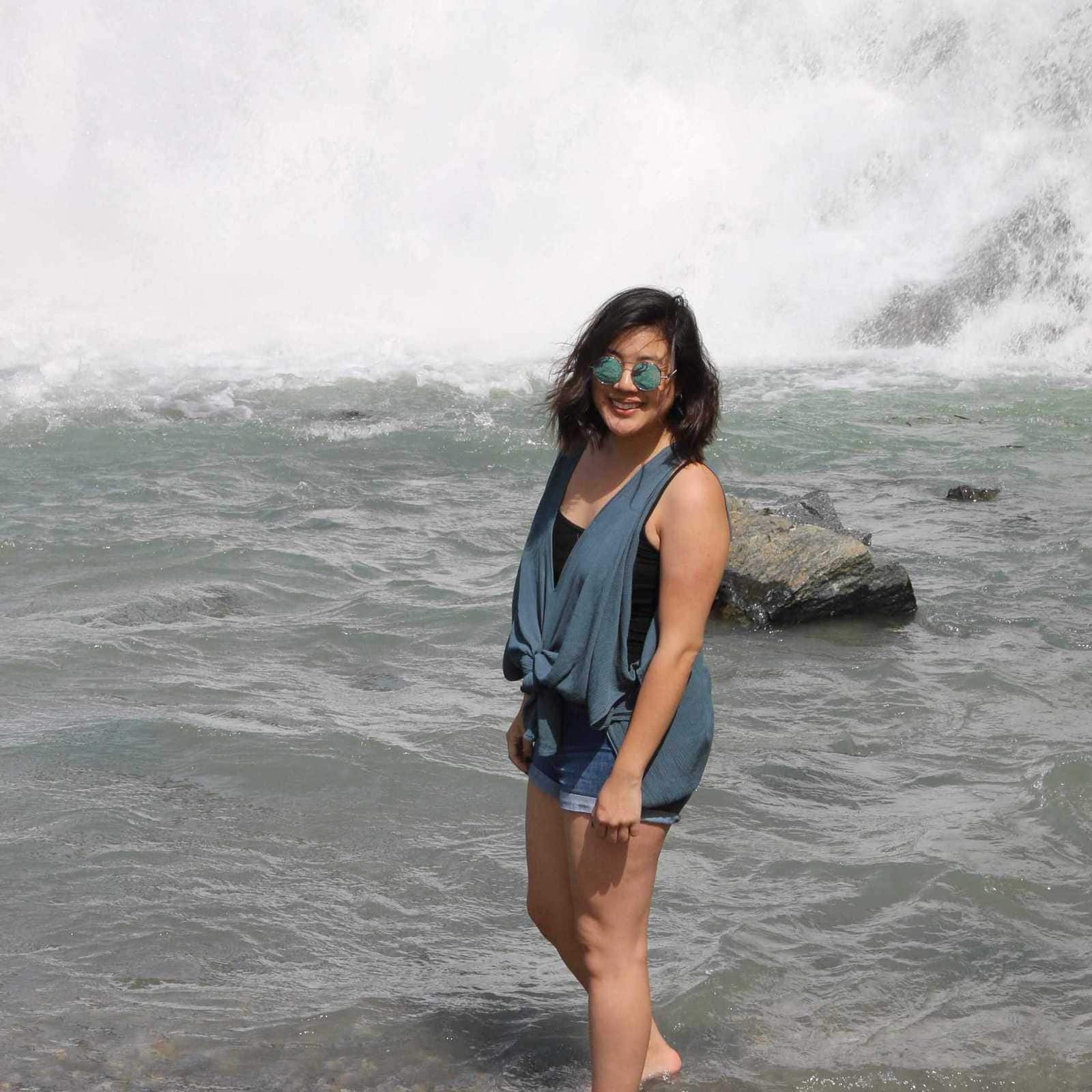

Comments